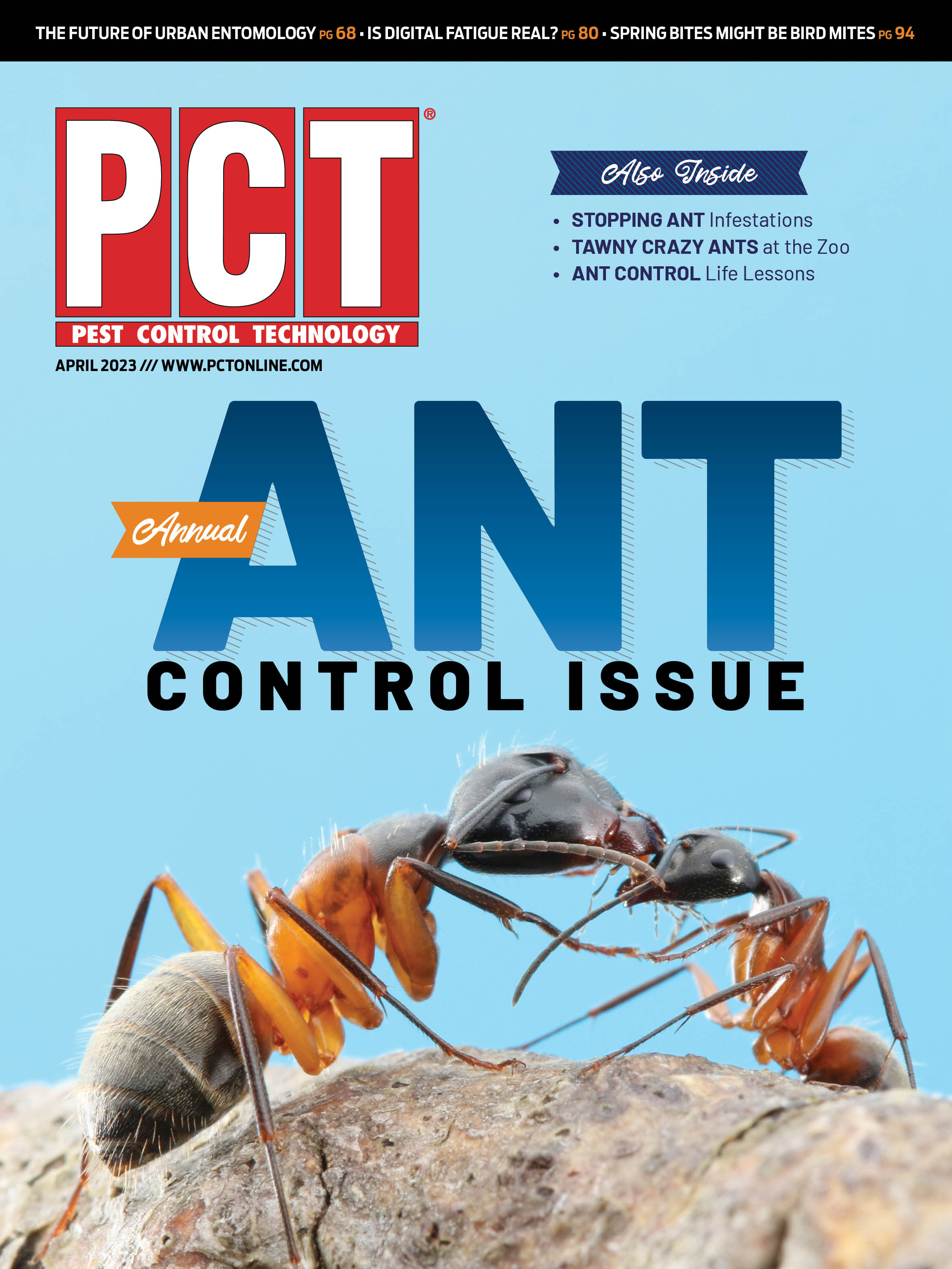
Communication between customers and PMPs is important to the success of any pest management program, but perhaps even more so with a green program. Thirty-one percent of PMPs say that it’s more important when green products are used, while 60 percent say it’s equally important in green and conventional programs.
“Customers need to understand that there is no magic pill. If they want a botanical program to work for them, they need to participate,” says Lin Ellis, founder of Eco Friends Organic Pest Control in Texas. “We inspect the property, tell them where the pests are coming from, why they’re coming and how they’re getting in. Then we explain their role — cleaning up debris in the yard, addressing necessary exclusion work and maybe even planting some herbs in their garden to help deter bugs. Nine times out of 10, our clients cooperate 100 percent. In fact, some of them want to do the exclusion work themselves, so we explain how they can do that, too.”
At Ecoskan Pest Solutions in California, Sam Tutton has collaborated closely with a city-managed museum account for the past five years. The account requires botanical pesticides and no rodenticides for its green program. Tutton shares that his city team is incredibly cooperative and embraces the concepts of IPM. Over the years, however, he has found that not all municipal clients are open to building that type of working relationship.
“When we tell some decision-makers that this is a partnership, that we need cooperation and regular feedback from them, they say, ‘No, the pest control is your job and we’re not going to do the things you ask,’” he explains. “Another city will say, ‘We get it: That’s what integrated pest management is. We’re happy to be involved.’ It has to be a strategic partnership to work. That starts with understanding how a green program works and agreeing to certain communication standards.”
Part of the need for such close communication stems from the reality that a green program can require more time and visits, which builds time and expense into the program, says Chad Highley, Environmental Pest Control. “Customers and service technicians need more education so they understand that you don’t start out with peak efficacy upon initial application; you have to apply botanicals regularly to take advantage of their compounding effect,” he says. “It’s also important to explain the odor. Clients may expect the more traditional smell of pesticide, but instead they’re getting a strong sweet or peppery scent. That can be concerning for them. We explain that we’re using the same type of oils we put in our diffusers in the office. That tends to put them at ease.”
Mike Travers, EcoGeek Pest & Termite Control, says solid relationships are based on setting clear expectations and ensuring customers understand the benefits and limitations of natural products. “We have a thorough onboarding process that includes educating our customers about our eco-friendly pest control approach and the products we use,” he says. “We also have transparent communication channels in place, including regular check-ins and follow-up calls, to ensure that customers are satisfied with the results and that any concerns are addressed in a timely manner. By prioritizing communication, we build trust and credibility with our customers, and demonstrate our commitment to providing effective, safe and sustainable pest control services.”
Adds Highley, “Whether we’re using conventional or green products, we always explain that we apply materials according to the label and as safely as possible. We live in this environment, too, and we take our responsibility to protect it seriously.”


Explore the April 2023 Issue
Check out more from this issue and find you next story to read.
Latest from Pest Control Technology
- Expert Exchange: Staying Ahead of Bed Bug Adaptations With Unmatched Expertise and Solutions
- Los Angeles Leads Orkin’s 2024 Top Mosquito Cities List
- The Industry’s First Line of Defense: Protecting the Perimeter
- Golden Circle Exterminators Celebrated 50th Anniversary
- Global Pest Management Coalition Announces World Pest Day 2024 Celebration
- Orkin Helps Local Youth Sports Program Design a ‘Killah’ New Logo
- ABC Home & Commercial Services Celebrates 75 Years in Business
- NPMA Academy Announces Full Schedule





